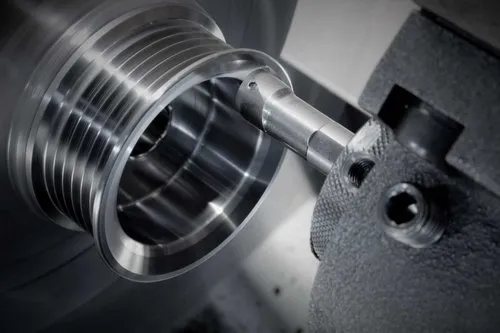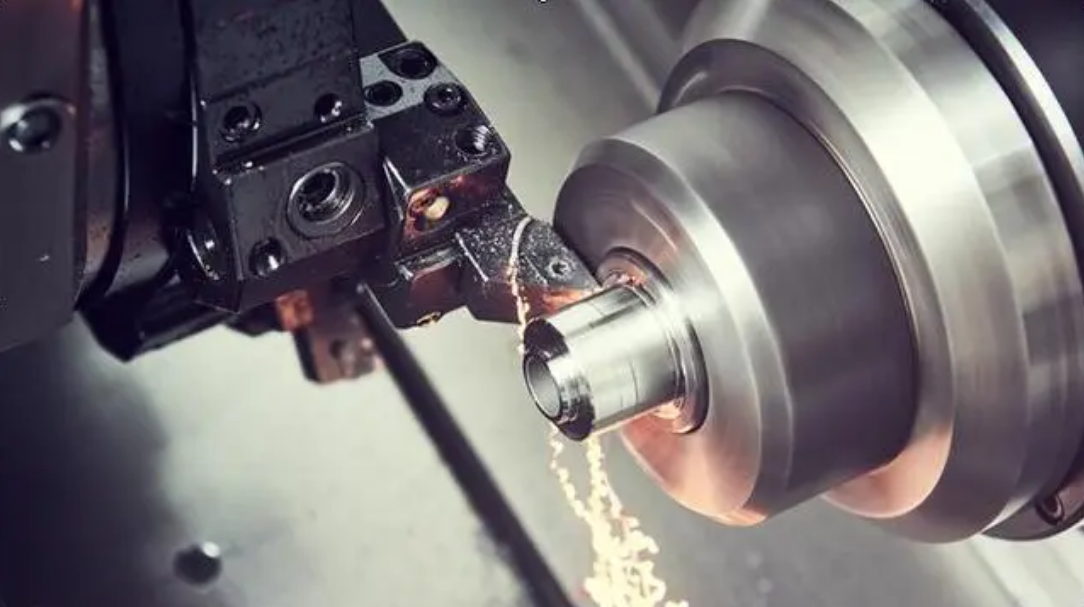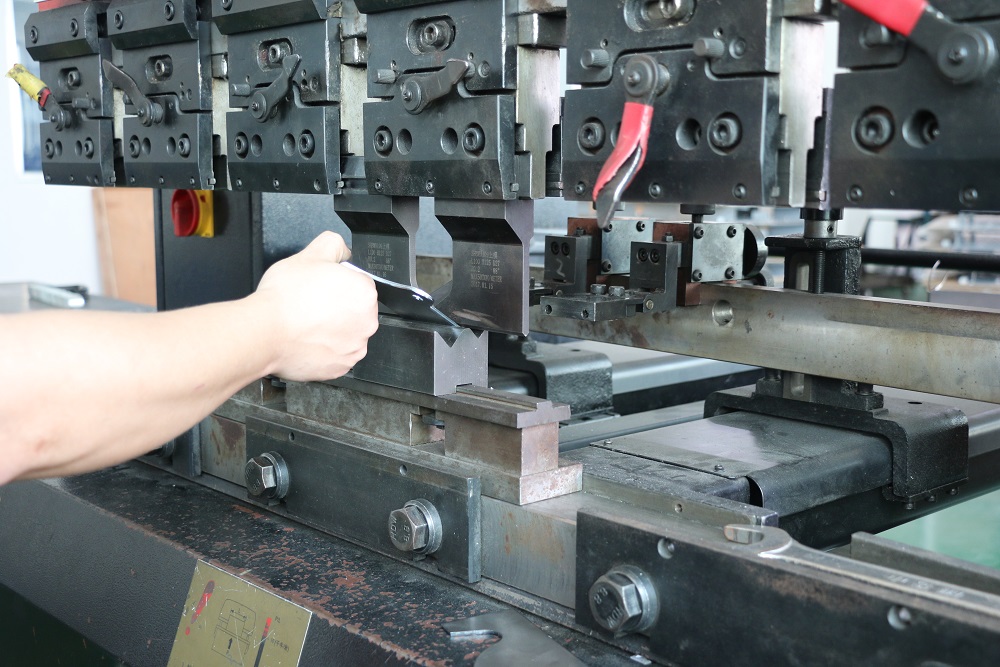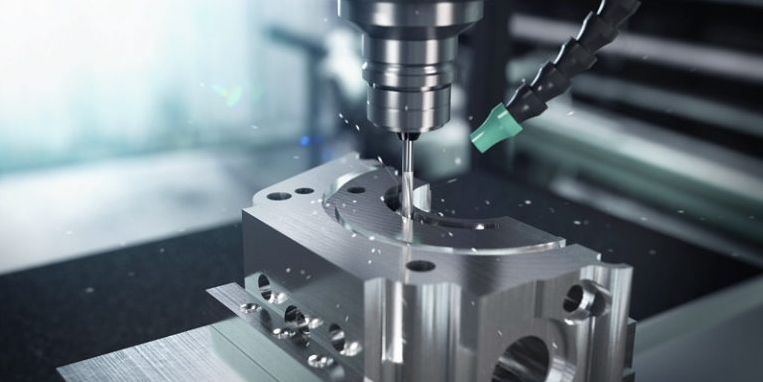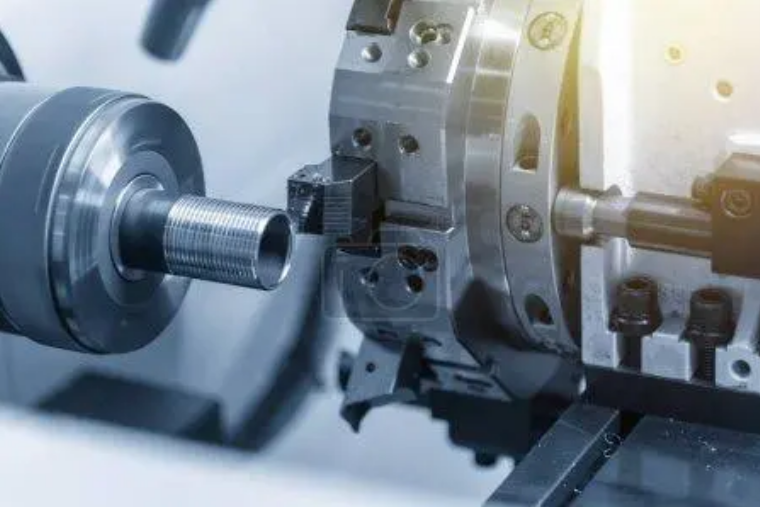Yes, sheet metal fabrication can significantly enhance production efficiency by improving precision, speeding up processes, and reducing costs through advanced techniques and automation.
Advanced Techniques in Sheet Metal Fabrication
Laser Cutting
It tops the list because of its precision and speed. This technique is used in industries concerned with intricate detail works such as electronics and automotive manufacturing. Moreover, modern fiber lasers are capable of cutting metals of 1” thickness . This is achieved with a precision of ±0.005”. There are three main steps the process follows: design input, laser path programming, and actual cutting. Not to mention, the technique has a positive impact on the overall material as it minimizes waste. As reported, companies, using this technique on a complex part, reduce the production time by up to 30%.
CNC Machining
In sheet metal fabrication, it provides the most consistency in mass production. The process is needed to create dimensions as close to the design specifications as possible, especially for the large production runs. It uses computer numerically controlled tools to perform tasks. Among the most common operations there are milling, turning, and drilling. Furthermore, one can use a single machine to perform several tasks; in this way, the metal is never moved between workstations, thus reducing the handling time.
Automation in Stamping and Forming
The forming of a sheet metal starts with stamping; automation has an impact on both. Robotic arms and sophisticated software operate in a manner that streamlines the process flow. The principal advantage is constant: during the production, the fewer people are involved, the fewer problems can pop up. Besides, automation speeds the process so that the lines can make material 24/7. For instance, an automotive parts producer installed an entirely automated stamping line, which boosted the production rate by 40%.
Broad View on Techniques
Such techniques are beautifully designed to help companies become faster and more efficient in their production output. Yet these methods are not the only ones with compelling advantages. They are the best to demonstrate how modern tech can cut lead times, reduce expenses, and allow companies to beat the competition. Despite the upfront costs, the investments would pay off for smart business owners.
Improving Speed and Precision
Topic: Time Savings in Two Different Companies in Different Industries
In the automotive industry, where speed and precision of production are crucial, advanced sheet metal fabrication technologies significantly reduce cycle times. A major manufacturer of automotive parts introduced a new press brake system with high-speed bending technology, which allowed it to decrease part handling time by 25% . Today, the production process involves the setup, when the machine is provided with specific tools, programming the required bends, and executing the sequence in an optimal run, which allow the firm to manipulate machinery quickly to increase output and maintain high quality, which is critical for automotive parts.
In the aerospace industry, the demand for precision is even higher given the nature of its components. State-of-the-art CNC machining, which relies on 5 axes, allows manufacturers to produce components with a tolerance of within 0.0001 inches . An example of this is the aerospace supplier that used a more conventional approach when manufacturing complex brackets, before transitioning to the 5-axis machine . As a result, the firm increased the speed of production by 20% and removed some of the secondary finishing from the process. The latter includes preparation of a CAD mode, the simulation of the tool path, the real machining, and the post-processing inspection, which ensures that each component meets the meticulous demands of aerospace production.
Overall, these advancements allow companies to provide faster and more precise production, making the ability to meet strict deadlines and requirements easier. By improving these processes, firms stay competitive and do not fall behind the benchmarks, while being ahead of the innovation curve.

Cost Reduction Strategies
Material Optimization: Waste Reduction
Material costs have always been a major factor in the sheet metal fabrication business. At the same time, technology that helps to optimize material layout could revolutionize the industry. For example, the implementation of nesting software that optimizes the cutting patterns for each metal sheet has shown promising results. One fabricator reported a 15% decrease in material waste . The general process includes: 1) setting the material dimensions as well as the shapes of the parts you want to cut on the sheet into a nesting software, 2) running the software to calculate the most efficient cutting method, and 3) cutting the material accordingly. Apart from benefiting the environment due to decreased waste, the technology also has major implications in terms of raw material costs.
Economies of Scale: Automated Processes
Another way to lower production costs without spending significantly more on labor is to invest in automation. Robotic arms, as well as continuous production lines, can significantly reduce unit labor costs. A draw forming facility has reduced their labor costs by 30% due to automation of the cutting and assembly of sheet metal . The steps required include: 1) selecting the technology that is most sufficient for the needed operations, 2) integrating these technologies into an existing production line, and 3) training the staff to be able to utilize the equipment. The lower unit costs ensure that the prices stay competitive as fixed costs of the whole operation are spread out over larger volumes.
To conclude, it is clear that these methods of cost reduction are more of beneficial investments than cost reductions. They allow companies to endlessly optimize their production and avoid competition in the shrinking segment of highly effective old processes.
Enhancing Flexibility and Scalability
There are two essential tools that help manufacturers to keep pace in the dynamic environment of contemporary production – the ability to adapt to custom and complex designs, and the ever-increasing scalability in mass production settings. Companies that specialize in the production of mold, pressed, and shaped sheet metal parts may benefit from both of those capabilities. One of the advanced fabrication technologies that allow quick reshaping and editing of custom and complex designs is 3D laser cutting, which is often supplemented with modular mold systems . Given that a mold and press metal part manufacturer also produces custom automotive products, it is possible to switch between available designs not in days, but in hours. The convenient design work is enabled with digital software, and the required hardware rapidly changes the settings. Finally, the real-time monitoring of otherwise high error rates can further help improve product quality, and reduce the time required for new product introduction by up to 50%.
The second tool for maintaining a rapid change of production pace is scalability. Manufacturers that invest systematically in process automation, and install advanced AI-driven, computerized systems of machines, no longer need to choose between higher product quality and increased production output. A good example when more robotics results in increased productivity was observed with a mass production of sheet metal casings for various consumer electronics, ranging from personal computers to air conditioners. The company, which prior to the scale operation produced 10,000 casings per month, increased its production tenfold after adapting machinery, integrating advanced scheduling and AI solutions, that help adjust product specifications in real time during the production process, and improve product quality in process by monitoring it with AI-driven and computerized every step of the production process.

